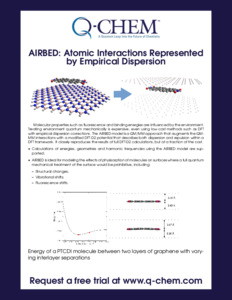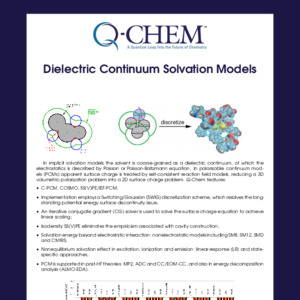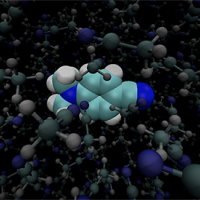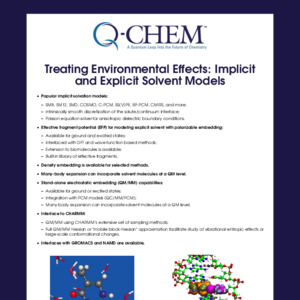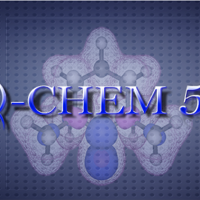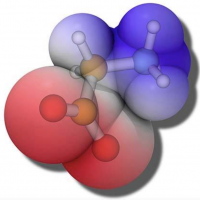AIRBED: Atomic Interactions Represented by Empirical Dispersion

Molecular properties such as fluorescence and binding energies are influenced by the environment. Treating environment quantum mechanically is expensive, even using low-cost methods such as DFT with empirical dispersion corrections. The AIRBED model is a QM/MM approach that augments the QM-MM interactions with a modified DFT-D2 potential that describes both dispersion and repulsion within a DFT framework. It closely reproduces the results of full DFT-D2 calculations, but at a fraction of the cost.
-
Calculations of energies, geometries and harmonic frequencies using the AIRBED model are supported;
-
AIRBED is ideal for modeling the effects of physisorption of molecules on surfaces where a full quantum mechanical treatment of the surface would be prohibitive, including:
-
Structural changes;
-
Vibrational shifts;
-
Fluorescence shifts.
-

Want to try Q-Chem?
